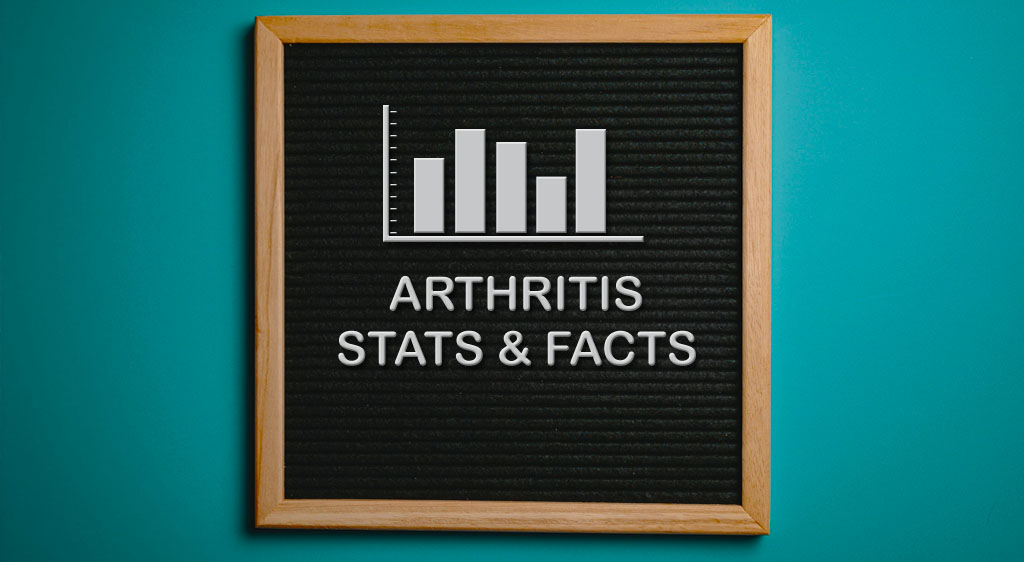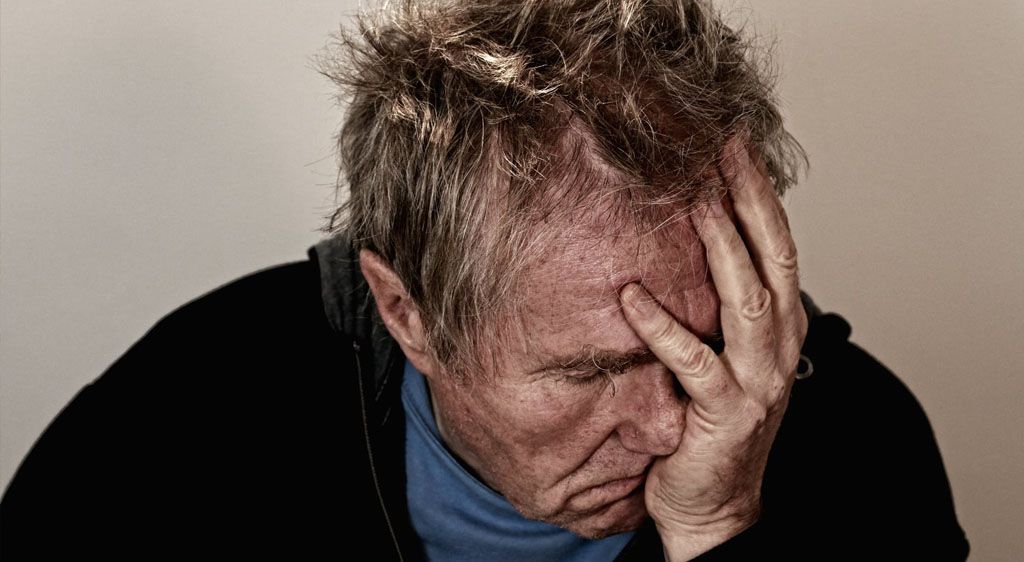Mattresses
SHOP STANDARD SIZES
SHOP STANDARD SIZES
SHOP BY TYPE
SHOP BY BRAND
RV Mattresses
Adjustable Beds
Shop By Brand
Shop By Size
Oversized Beds
Restless Legs Syndrome Statistics
In simple terms, arthritis is inflammation of the joints. The main symptoms of arthritis are pain and stiffness in the joints that usually worsens with age. These symptoms also develop over time, but they may also suddenly appear. Although arthritis is commonly associated with adults, it can also develop among children. Arthritis is more common in women than in men and in people who are overweight. There are also several types of arthritis, and each has its own treatment.
(Mayo Clinic), (Heathline)
The Most Surprising Arthritis Statistics
- The term “arthritis” is used to describe around 200 conditions that affect joints, the tissues that surround the joint, and other connective tissue.
- In the US, the combined arthritis statistics from the CDC and National Health Interview Survey between 2013 and 2015 estimate that 22.7% of adults have arthritis.
- About 18.1 and 23.5% of men and women have arthritis, respectively.
- About 43.5% of adults with arthritis have limitations in their usual activities.
- About 23.6% of adults with arthritis have no leisure-time physical activity.
- On the other hand, only about only 18.1% of those who meet the physical activity recommendations have arthritis.
- By 2040, About 2/3 of those with arthritis will be women.
- Moreover, by 2040, 43.2% of those with arthritis will report activity limitation due to the disease.
(Medical News Today), (Center for Disease Control and Prevention)
General Arthritis Statistics and Facts
Osteoarthritis
1. Osteoarthritis affects more than 30 million men and women.
Osteoarthritis is the most prevalent type of arthritis. Normally, cartilage cushions the ends of your bones. However, in osteoarthritis, this protective cartilage breaks down. As a consequence, the bones can rub together, causing pain, stiffness, and more negative effects. The prevalence of osteoarthritis on different bones varies. Below are the ranges of various arthritis statistics that included osteoarthritits.
- Knee: 15.4 to 25.4%
- Hip: 4.2 to 19.6%
- Foot: 0.1 to 61%
- Multiple Joints: 50%
(Healthline), (Allen and Golightly)
2. About 22% of people with osteoarthritis report it to be disabling.
Osteoarthritis is still irreversible. Treatment focuses on managing the symptoms of pain and stiffness. However, these symptoms can be so great that they can limit movements and other physical activities.
(Healthline), (Dr. Elaine Thomas)
3. The risk of developing symptomatic knee osteoarthritis rises to 60% for people with a body mass index (BMI) of 30 or higher.
A BMI of 30 or higher is considered obese. Since the knees support much of our weight, having too much weight can overstress the knees and hasten the development of osteoarthritis in those joints.
(Louise Murphy, PhD), (John Hopkins Arthritis Center)
4. Previous knee trauma can increase the risk of knee osteoarthritis by 3.86 times.
Besides, weight, sports participation and injury can also predispose people, especially athletes, to knee osteoarthritis.
(Dr. Milica Blagojevic-Bucknall)
5. About 40 and 68% of men and women with knee osteoarthritis squatted for 1 hour or more per day when they were 25 years old.
Prolonged squatting is a strong risk factor for tibiofemoral knee osteoarthritis among the elderly. Moreover, occupations involving squatting or kneeling for more than 2 hours per day were associated with a 2-fold significantly increased risk of moderate to severe radiographic knee osteoarthritis.
(Yuqing Zhang, MD)
6. Heavy manual labor can increase the risk of hip osteoarthritis by 6.7 times.
Various studies have found positive associations between hip osteoarthritis and occupations that involve heavy lifting and even prolonged walking and standing.
(Oxford Academic), (Dr. Elizabeth Clare Harris and Dr. David Coggon)
7. Arthritis statistics estimate that if obesity was eliminated, the prevalence of hip osteoarthritis would go down by 25%.
Just like the knees, the hips support much of our weight. Thus, being overweight or obese can degrade the protective cartilage and accelerate the incidence of hip osteoarthritis.
(Dr. David Felson and Dr. Yi Zhang), (John Hopkins Arthritis Center)
Rheumatoid Arthritis
8. Rheumatoid arthritis statistics estimate that about 0.24 to 1% of the population have the disease.
Rheumatoid arthritis is the most common autoimmune arthritis. In contrast with osteoarthritis, which is due to the mechanical wear and tear of the joints, rheumatoid arthritis, being an autoimmune disorder, is due to your immune system mistakenly attacking your own joints. The consequence is painful swelling that can eventually result in bone erosion and joint deformity. Rheumatoid arthritis also affects the joints on both sides of the body, whereas osteoarthritis can sometimes affect only one side. Moreover, the inflammation in rheumatoid arthritis can also damage other parts of the body such as the skin, eyes, lungs, heart, blood, or nerves.
(UpToDate), (Mayo Clinic), (WebMD)
9. Rheumatoid arthritis generally starts between the ages of 30 and 60 years.
However, rheumatoid arthritis can begin at any age, even in childhood. Rheumatoid arthritis typically begins insidiously, with signs and symptoms slowly developing over weeks or months.
(WebMD), (Johns Hopkins Arthritis Center)
10. The lifetime risk of developing rheumatoid arthritis is 1.7 and 3.6% for men and women, respectively.
Experts believe there are two main reasons for the gender differences. Women are more prone to autoimmune diseases in far greater numbers than men, which may be due to the female immune system being stronger and more reactive. The other reason may be due to sex differences in hormones.
(Dr. Cynthia Crowson), (Intermountain Health Care)
11. Women can have a 10% higher risk for rheumatoid arthritis for each 5% increment of total body fat.
Moreover, the risk can also be 5% higher for each 5-cm increment of waist circumference, and nearly 50% higher for those whose body mass index was is in the obese range. Excess body fat can release high levels of cytokines, which are chemicals that cause inflammation, which can aggravate or promote rheumatoid arthritis.
(Asta Linauskas, PhD), (Arthritis Foundation)
12. Those who smoke 25 or more cigarettes per day can have a 92% higher risk for seropositive rheumatoid arthritis.
Seropositive rheumatoid arthritis is the most common form of rheumatoid arthritis. Various studies on rheumatoid arthritis statistics have shown that the disease is related to smoking. It was found out that women who stopped smoking for 30 years have a 37% lower risk of rheumatoid arthritis.
(MedPage)
13. A study found that people with 4 or more symptoms of post-traumatic stress disorder (PTSD) have a 76% higher chance of having rheumatoid arthritis.
As the number of PTSD symptoms increases, so does the risk for rheumatoid arthritis. Many studies have found a link between stress and autoimmune diseases. The connection may be due to the systemic inflammation that stress causes.
(Yvonne Lee, MD)
Arthritis and Sleep
14. As many as 80% of people with arthritis struggle with sleep.
The pain that comes with arthritis can make it difficult to have restful sleep. Moreover, sleep deprivation can also make your pain feel worse and increase your chances of being disabled or depressed.
(Arthritis Foundation)
15. About 20% of people with rheumatoid arthritis can experience excessive daytime sleepiness (EDS).
An effect of the sleep problems that people with arthritis experience is EDS. People with EDS can have lower cognitive function and are more at risk to incidents like motor vehicle incidents and work-related injuries.
(Dr. Mohammad Mustafa), (American Academy of Family Physicians)
16. About 50% of people with rheumatoid arthritis can be at risk of obstructive sleep apnea (OSA).
Patients with rheumatoid arthritis have a higher risk for developing cardiovascular disease. Having cardiovascular diseases is also linked to chronic OSA. Moreover, OSA is known to also have inflammatory, coagulation, and endothelial changes, which can also be found in patients with rheumatoid arthritis. Thus, it is possible that OSA and rheumatoid arthritis operate similarly.
(Stephanie Reading, B.S)
17. About 30% of people with rheumatoid arthritis can also have restless legs syndrome (RLS).
Rheumatoid arthritis is a disease of the immune system while RLS is a disease of the nervous system. However, there is an intimate relationship between both systems, which has major implications for sleep, especially if there is a condition of chronic inflammation like rheumatoid arthritis. For example, cytokines, which are molecules that cause inflammation and are highly produced in rheumatoid arthritis, influence sleep. Moreover, a common issue between RLS and rheumatoid arthritis is iron deficiency.
(Dr. John Gjevre)
Treatments
18. Arthritis treatments focus on relieving symptoms and improving joint function.
There is no cure for arthritis. Moreover, as there are around 200 types of arthritis and can affect different parts of the body, there is no single treatment. Most treatments involve rest, occupational or physical therapy, exercise, drugs, and sometimes surgery to correct joint damage.
(Mayo Clinic), (WebMD)
Conclusion
Having any form of arthritis can be debilitating. Since there is no cure for arthritis and it is a lifetime condition, the best we can do is prevent it. Knowing the risk factors, such as smoking, excessive weight, and stress, and avoiding these risk factors can save us from a lifetime of pain.
References
Mayo Clinic:
https://www.mayoclinic.org/diseases-conditions/arthritis/symptoms-causes/syc-20350772
Healthline:
https://www.healthline.com/health/arthritis
Medical News Today:
https://www.medicalnewstoday.com/articles/7621
Center for Disease Control and Prevention:
https://www.cdc.gov/arthritis/data_statistics/national-statistics.html
Healthline:
https://www.healthline.com/health/osteoarthritis
Allen and Golightly, 2015:
https://www.ncbi.nlm.nih.gov/pmc/articles/PMC4405030/
Thomas et al., 2014:
https://pubmed.ncbi.nlm.nih.gov/24173433/
Murcphy et al., 2008:
https://pubmed.ncbi.nlm.nih.gov/18759314/
Johns Hopkins Arthritis Center:
Blagojevic et al., 2010:
https://pubmed.ncbi.nlm.nih.gov/19751691/
Zhang et al., 2004:
https://pubmed.ncbi.nlm.nih.gov/15077301/
Juhakoski et al., 2009:
https://academic.oup.com/rheumatology/article-abstract/48/1/83/1790243
Harris and Coggon, 2015:
https://www.ncbi.nlm.nih.gov/pmc/articles/PMC4759927/
Felson and Zhang, 1998:
https://pubmed.ncbi.nlm.nih.gov/9704632/
UpToDate:
Mayo Clinic:
https://www.mayoclinic.org/diseases-conditions/rheumatoid-arthritis/symptoms-causes/syc-20353648
WebMD:
https://www.webmd.com/rheumatoid-arthritis/default.htm
WebMD:
https://www.webmd.com/rheumatoid-arthritis/what-need-know-elderly-onset-ra#1
Johns Hopkins Arthritis Center:
https://www.hopkinsarthritis.org/arthritis-info/rheumatoid-arthritis/ra-symptoms/
Crowson et al., 2011:
https://pubmed.ncbi.nlm.nih.gov/21360492/
Intermountain Health Care:
https://intermountainhealthcare.org/blogs/topics/live-well/2016/05/womens-arthritis/
MedPage Today:
https://www.medpagetoday.com/rheumatology/arthritis/78149
Lee et al., 2016:
https://www.ncbi.nlm.nih.gov/pmc/articles/PMC4740283/
Linauskas et al., 2019:
https://pubmed.ncbi.nlm.nih.gov/29975015/
Arthritis Foundation:
Arthritis Foundation:
https://arthritis.org/health-wellness/healthy-living/managing-pain/fatigue-sleep/sleep-and-pain
Mustafa et al., 2019:
https://www.ncbi.nlm.nih.gov/pmc/articles/PMC6613346/
American Academy of Family Physicians:
https://www.aafp.org/afp/2009/0301/p391.html
Reading et al., 2009:
https://www.ncbi.nlm.nih.gov/pmc/articles/PMC2834190/
Gjevre and Gjevre, 2013:
https://www.ncbi.nlm.nih.gov/pmc/articles/PMC3694367/
© 2025 Rest Right Mattress. All Rights Reserved.




